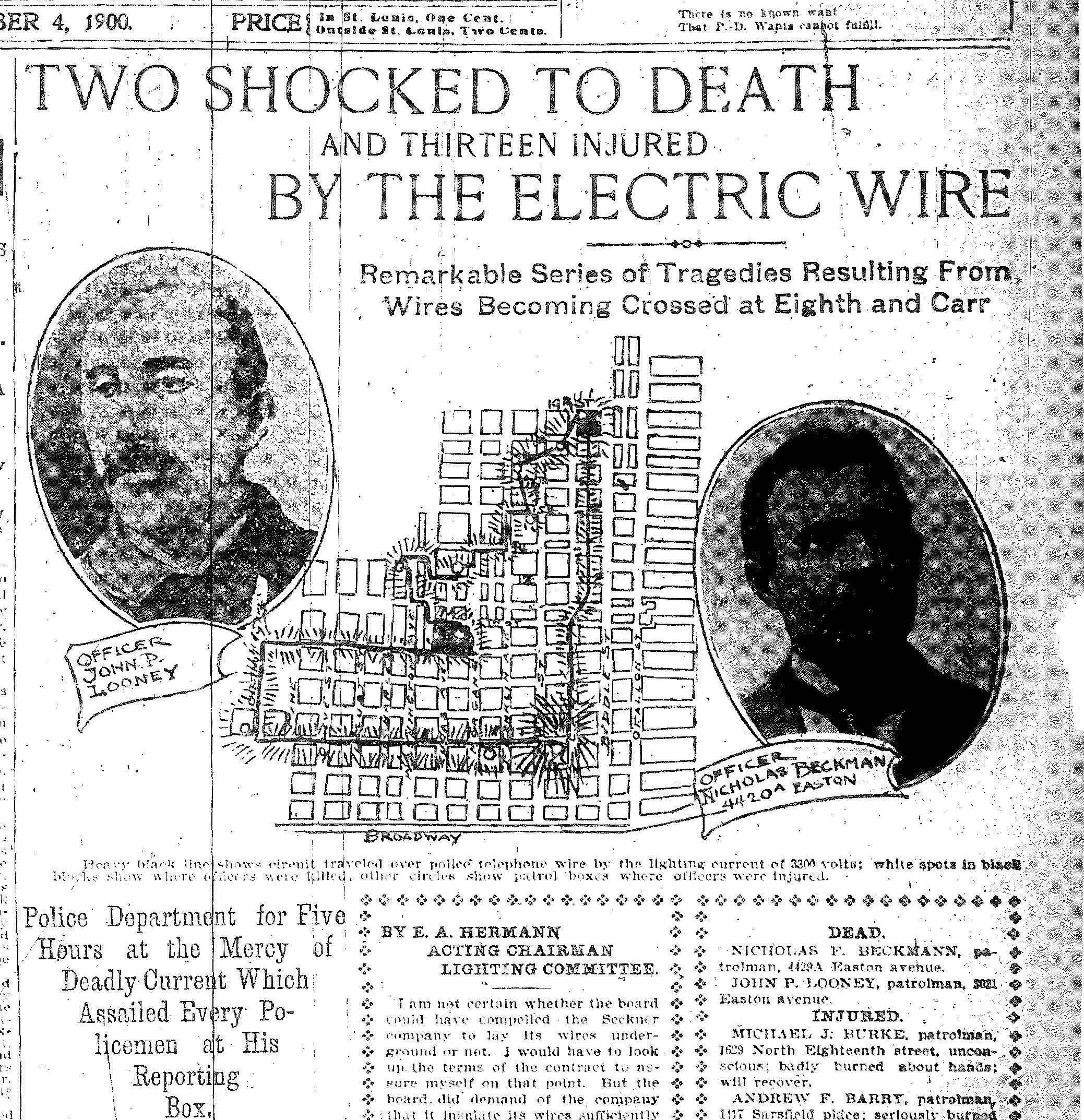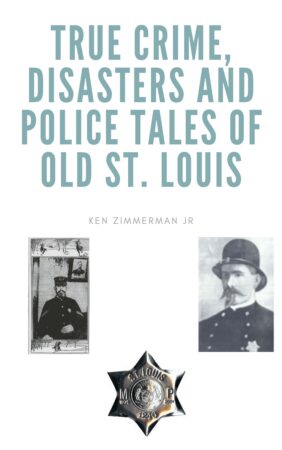Deadliest Night for St. Louis Policji
Śmiertelny wypadek w St. Historia Louis Policja nie była strzelanina, natural disaster, or act of terrorism. Śmiertelny wypadek w St. Historia Louis Police wystąpiły w nocy z poniedziałku, Wrzesień 3, 1900. Electricity was the assailant as a power line with 3300 woltów elektryczności spadła na liniach telefonicznych, at Eight Street and Carr Avenue. The telephone lines connected all the policemen’s call boxes in the Downtown area.
Seventy police officers patrolling the Downtown District were potential victims as they made their way to the call boxes for their 7:00 p.m. check-in. Pod koniec nocy, two police officers lay dead, and electricity seriously burned thirteen other officers. The current also injured officers by throwing the officers from the call boxes or the headquarters call center.
Przed rozpoczęciem realizacji dwukierunkowego radia, police officer called in on the call box every hour, so the station knew they were okay. The call box was also the primary way to call for a transport after arresting someone. As the police officers began to make their way to the call boxes, the electric current knocked an operator against the wall in the headquarters call center.
St. Louis Police command personnel sent out messengers to warn the officers about the potential threat, but too many officers did not get the warning in time. Dróżnik, którzy odpowiedzieli na siedzibę policji, także źle szoku, when he tried to address the problem.
The thirteen injured officers suffered burns to their hands, or the current knocked them unconscious. The current threw a handful of officers from the call box leading to joint injuries. Najczęstsze oparzenia były do rąk z włożeniem klucze do budki telefonicznej lub kręcenie uchwyt budki telefonicznej.
Patrol Officer John F. Killoren inserted his key into the call box at Fifteenth Street and Franklin Avenue and the electric current through Killoren into the street. Killoren zachwiał się na nogach i próbował otworzyć okno rozmowy ponownie przed przechodniów mógł go zatrzymać. The current knocked Killoren back into the street again with serious burns to his hands.
Oprócz rannych funkcjonariuszy, who citizens transported to the hospital, two officers lost their lives that night. Prąd zabił młody oficer, Nicholas F. Beckmann, i doświadczony oficer, John P. Looney.
Beckmann was a twenty-six-year-old police officer and veteran of the Spanish-American War. Beckman fought at the battle of San Juan Hill, which made Theodore Roosevelt’s Rough Riders famous.
Beckman używane okno rozmowy na XVIII ulicy między Waszyngtonem a Carr Avenue. Jak Beckmann otwarte okno rozmowy, wrzasnął i upadł do tyłu. Osoby postronne zabrała go do pobliskiego szpitala ewangelickiego, gdzie nigdy nie odzyskał przytomności. Dział musiał przełamać wiadomości do swojej owdowiałej matki, który mieszkał z Beckmann.
James Looney był 41-letni mąż i ojciec, który był na życie od 1893. The electrical current shocked Looney as he tried to open the call box at Twelfth Street and Morgan Avenue. Citizens carried Looney to the dispensary, but he never regained consciousness. Looney died 15 minutes after the first shock.
City Lighting officials determined the source of the shock to be the power line from the Seckner Contracting Company. Według urzędników miejskich, the Seckner Company’s was supposed to bury their wires, but the company received a waiver from the Board of Public Improvements. The officials cut down the responsible lines and told Seckner to bury the lines after repairing them.
W 2006, St. Louis uznał, że Departament Policji Michael P. Burke, who was one of the thirteen men shocked that night, died from the shock 15 months later, Grudzień 13, 1901. It was one of the rare occasions that three St. Louis officers would lose their lives in the same incident. The department shootouts get more coverage but the deadliest night in St. Historia Louis Policja Był wrzesień 3, 1900, when electricity attacked an unsuspecting force doing their duty.
Sources: St. Louis Post-Dispatch, Wrzesień 4, 1900, p. 1
You can leave a comment or ask a question about this or any post on my Facebook page.
Pin It



